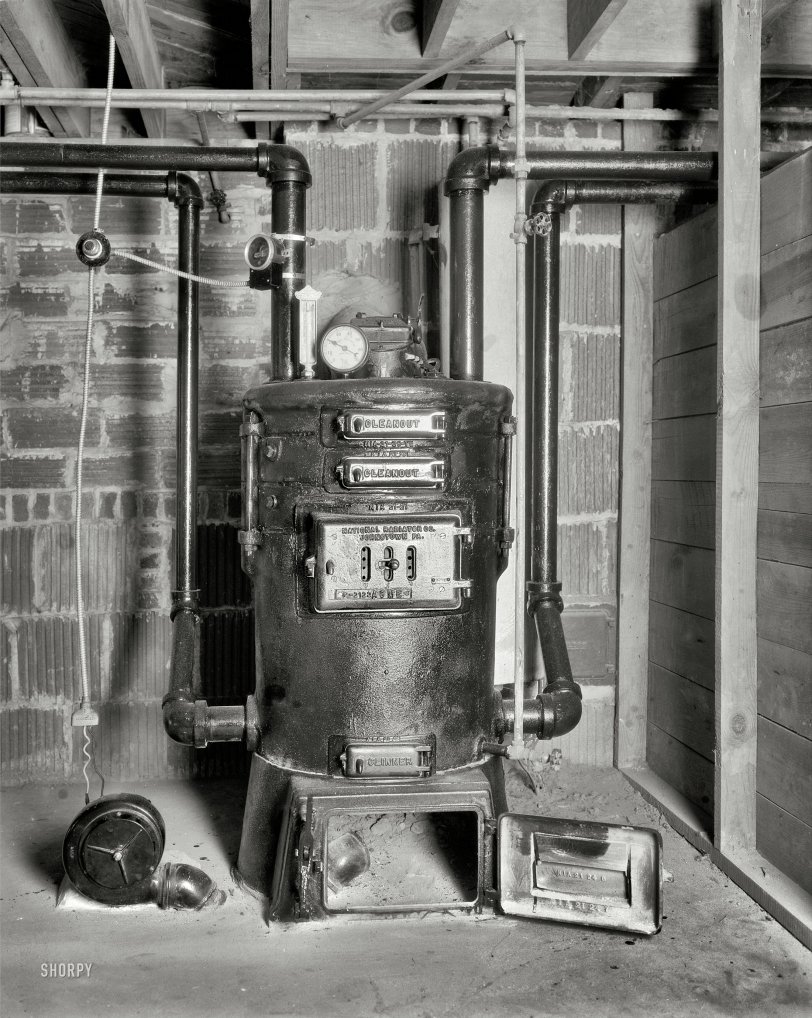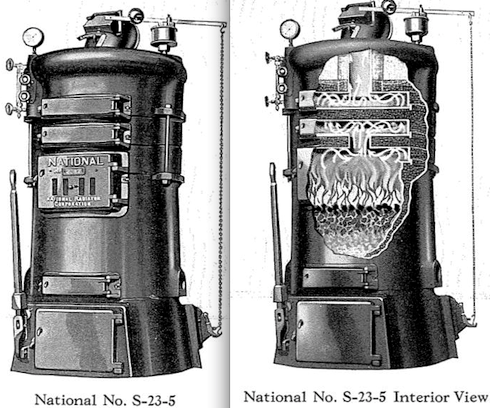


Framed or unframed, desk size to sofa size, printed by us in Arizona and Alabama since 2007. Explore now.
Shorpy is funded by you. Patreon contributors get an ad-free experience.
Learn more.

- Freeze Frame
- Texas Flyer wanted
- Just a Year Too Soon
- WWII -- Replacing men with women at the railroad crossing.
- Yes, Icing
- You kids drive me nuts!
- NOT An Easy Job
- I wonder
- Just add window boxes
- Icing Platform?
- Indiana Harbor Belt abides
- Freezing haze
- Corrections (for those who care)
- C&NW at Nelson
- Fallen Flags
- A dangerous job made worse
- Water Stop
- Passenger trains have right of way over freights?
- Coal
- Never ceases to amaze me.
- Still chuggin' (in model form)
- Great shot
- Westerly Breeze
- For the men, a trapeze
- Tickled
- Sense of loneliness ...
- 2 cents
- Charm City
- What an Outrage
- Brighton Park
Print Emporium
Central Heat: 1932

Washington, D.C., circa 1932. "Ben Franklin Press" is all it says here. National Photo Company Collection glass negative. View full size.
Gravity Heating.
JK - there is no sight glass. Not a steam boiler.
SD - not a water heater.
jojodc - is correct. It's a gravity heating boiler, but there is no domestic water heating coil in this boiler.
The electric blower was usually for anthracite coal.
The studs-and-plank wall to the right is one wall of the coal bin. Also of note - the foundation of the building shown behind the boiler is structural terra cotta. http://historicbldgs.com/terra_cotta.htm
Full of "Go"
National Heating Guide, 1930.National Round Boiler
This boiler makes a powerful appeal to all seeking a business-like efficient heating unit, free of frills, but full of "go." A total of eighteen sizes, covering 6 grate diameters, provide an extremely wide variety of applications. The boilers are bonded to heat from 175 to 925 square feet of steam radiation, and 285 to 1530 feet of water radiation.
National Round Boilers are designed to perform with all types of fuel: domestic sizes of anthracite and bituminous coal, oil, gas and coke. They can be converted on the job to meet the individual requirements of the fuel selected. The design of the grate and heating surface; the scientific size and shape of the combustion chamber; the serpentine fire travel; the properly proportioned waterways, and the balanced system of air intake and damper controls, all unite to deliver a heating service eminently satisfactory because of maximum heating results from minimum fuel consumption.

Memories
Man oh man! Where are Ralphie and The Old Man???
It's a Clinker!
I'm reminded of the scene in A Christmas Story when Ralphie's Dad is doing battle with the furnace. We run that movie on continuous loop Christmas Eve and Day.
Common to Uncommon; Known to Unknown
Why would one take a picture of something so unremarkable as a steam boiler? And yet had they not, many of us would never have seen such a setup. I imagine some in 1932 thought it was a waste of supplies to take this particular photo -- and perhaps some today think so as well. But now something that was quite routine in that day proves to be a point of conversation and contemplation for us today.
It's interesting to note what appears to be a thermostat on the pipe on the left side, just above the thermometer. Apparently it triggered the blower to fan the fuel source, and hopefully increase the water temperature.
[National Photo took pictures like this because they were commissioned by a client. - Dave]
Steam Heat
This is just your run of the mill residential steam heat boiler. The tipoff is that half-full glass of water in the sight glass. With the ashpit clean the way it is, it's either summertime or Dad just finished up with the chore of removing the ashes and was so proud of himself, he took a picture! The vertical pipe leading down to the bottom of the boiler is the boiler feed valve. Since it looks like there's no automatic boiler feed assembly, Dad had to check the water level in the sight glass maybe a few times a week (more if it really cold out) and add water to the boiler when needed. That blower fan to the bottom left was a nice addition to the plant, especially if the fire was about to go out from the night before! Nice photo, Dave!
[This boiler served, as the caption indicates, a business establishment -- the printing plant of the Ben Franklin Press, 1320 F Street NW. - Dave]
Both!
At least in our house. It was a gravity-feed system. Hot water rose through the pipes, cool water returned - no pumps at all. Hot water was fed through the thing in a separate coil, I guess. It worked great the first year I lived here.
Looks familiar
We had one of these babies in the basement of our 1928 row home when we purchased it a couple of years ago. It was still running strong (converted to oil). I was sad to see it go. Shoulda took a picture!
Turbo charged.
Powered by 6' of wire in a 5' BX cable.
Boiler or water heater?
I grew up helping my father replace old boilers. The picture is in my opinion a hot water heater. My rationale is there is incoming water, and no pump to circulate the water. The blower on the floor blew air into the fuel area to maximize burning. I would guess this thing used coke. That thought coming from a lack of coal dust around the container. Not sure I am spelling coke correctly, but describing the by product of burning coal in the steel mills. Coke did require extra oxygen to generate heat quickly. Must be someone out there with more knowledge than me about these things!
























On Shorpy:
Today’s Top 5